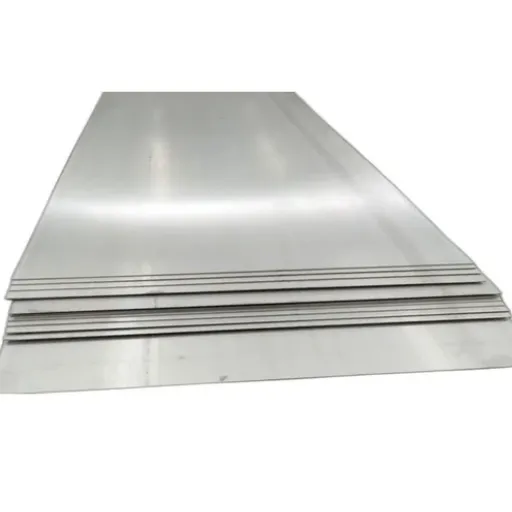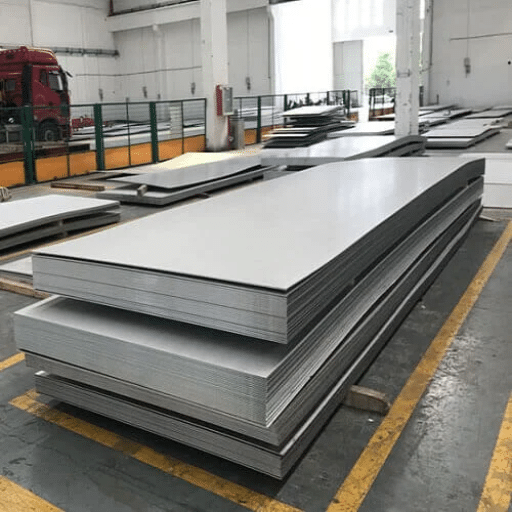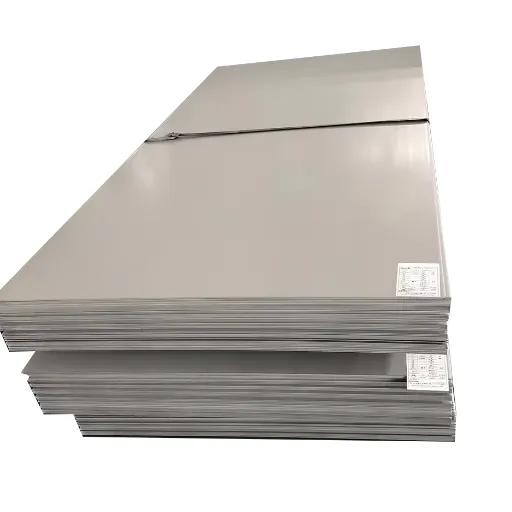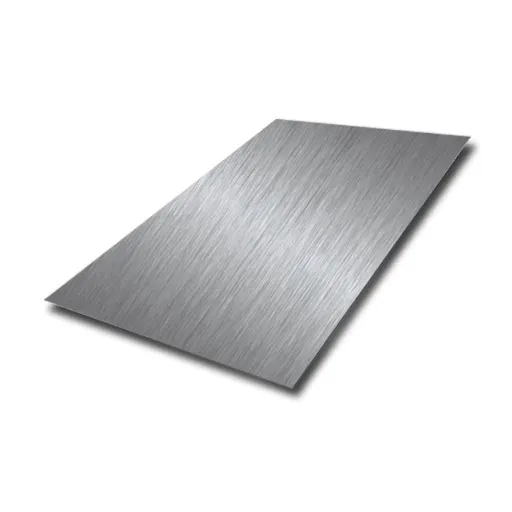Enhancements as minor as modifications to a bathroom’s grab bars can improve a user’s safety, accessibility, and overall experience. In particular, these stainless steel grab bars are hands down a must have addition due to the practical multifunctional features and the long-lasting durability. Their main function is to ensure that the user does not lose support in areas with high chances of slipping such as showers and bathtubs. Whether it’s for elderly members in the household, people with some handicaps, or just for the sake of preventing accidents for anyone in the family, it does make sense to mount a stainless steel grab bar. This article provides all the benefits, primary characteristics, and crucial steps regarding the integration of these safety aids, ensuring you have everything required to make a choice for your household.
What is a Stainless Steel Grab Bar and Why is it Important?
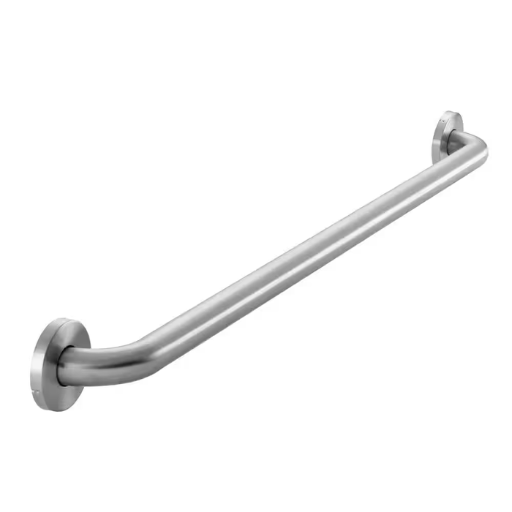
A steel grab bar is an example of a grab bar that is made of stainless steel and perpetually supports devices that are fitted with safety and balance stabilizers. Grab bars are accessible as toilet bars to help support balance within a person’s hand. These grab bars which supports mobility has less expense in purchasing. For elderly people or the middle-aged, grab bars are an essential need. These grab bars are designed to provide aesthetic and functional view.
Understanding the Purpose of a Grab Bar
Grab bars are crucial in ensuring safety and independence around the home or in an office. They are specifically aimed at averting falls and providing an increased sense of stability around bathrooms, stairs, and any other potentially dangerous place with smooth surfaces or weak sense of balance. In the last few years, a lot of research has been carried out in the field of home safety items and ergonomics. Well-mounted grab bars are likely to decrease the risk of injuries caused in the bathroom by around sixty percent which is very important when planning accessible and aging-in-place homes.
Grab bars today are designed using advanced technologies and materials which add modern-day functionalities. Many models have surfaces that are rough to enhance grip, even when wet, and some models include slip-resistant materials. Additional features like LED lights for nighttime visibility or support multifunctional shelving/towel rack are also added. These changes provide functional safety while still conforming to modern day aesthetic design standards, ensuring that safety does not compromise design appeal.
When it comes to specific applications, choosing a model requires understanding weight limits, types of mounting (wall-mounted versus freestanding), and ADA compliance. Also, proper placement such as vertical for entry support or horizontal for balance further optimizes their usability. These actions are essential for safety and ease of use.
Benefits for the Elderly and Seniors
The use of grab bars can help prevent the falls which are a leading cause of injury among the elderly, especially seniors. Every year approximately 25% of seniors aged 65 and older suffer from falls and the Centers for Disease Control and Prevention (CDC) has reported that employing these grab bars provides stable support and decreases the risk for such falls.
- Improved Independence
Grab bars also enable seniors and elderly patients to perform various activities independently, unsupervised, such as using a seated position to stand up, sitting to standing transitions, or bathing. This independence helps them regain some degree of control over their daily activities.
- Compliance with ADA Standards
Compliance with ADA (Americans with Disabilities Act) regulations calls for specially constructed items to help people with limited mobility. Grab bars have been incorporated into those designs which make them accessible to seniors. The geometry, location, and strength of grab bars provide the elderly users great usability.
- Enhanced Confidence and Mobility
Supporting and stabilizing a senior while conducting activities boosts their motivation and confidence by reducing fear. That psychological state as a whole can increase mobility and boost engagement in activities.
- Reduction in Caregiver Strain
Supportive grab bars lessen some of the workload burdens of caregivers when taking the elderly seniors through the baths or helping them use toilets. Physically demanding caregiving tasks can be made easier with the use of grab bars, helping elderly patients gain a measure of independence.
The unique combination of precise mental and physical needs provided by grab bars helps foster dignity and confidence in the daily life routines performed by seniors, thus enabling them to age gracefully without compromising essential quality of life features, achieving optimum levels of independence and self-sufficiency.
Safety and Accessibility in the Bathroom
Currently, the bathroom is considered one of the most dangerous places in a home for elderly individuals and those suffering from various forms of partial mobility disability. According to some research, about 80% of falls elderly individuals experience while bathing. The need for balance while participating in casting balancing activities greatly increases the already high chances of injury sustained in this area.
By focusing on anti-slip mats, raised toilet seats, and adjustable shower heads, accidents can be significantly reduced. Moreover, these changes help maintain the user’s ease of movement. To increase stability, specially designed grab bars are positioned near toilets and bathtubs to assist people at critical points. These essential bathroom aids are made of stainless steel or other reinforced materials which provide reliable handholds.
Stainless steel grab bars with textured grips and coatings made for high corrosion resistance enhance bathroom safety aids. Besides, proper illumination alongside an ergonomic layout improves the overall ease of access and security for the users. These modifications highlight a need to plan ahead when designing bathrooms that maintain ease of use while considering individual safety for everyone.
How to Choose the Right Stainless Steel Grab Bar?
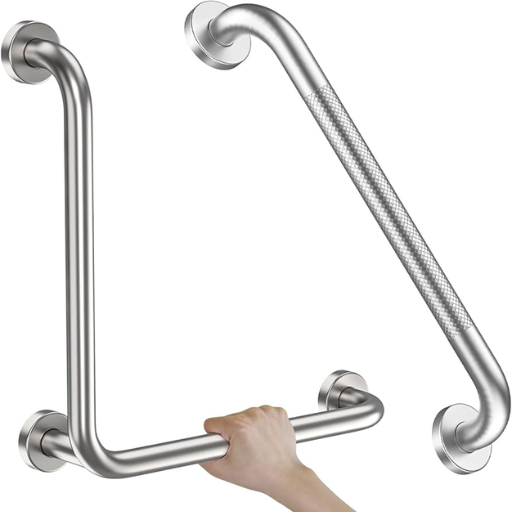
- Determine the Location
Specify the locations that require installation of the grab bar such as next to the shower, bathtub, or toilet. This guarantees adequate user support and access.
- Select the Appropriate Size and Length
Make sure the length of the bar matches the height of the user for better ergonomics. Length options vary between 12-42 inches. Wider spaces require bigger support aids which might need longer bars.
- Examine the Weight Capacity
Always verify the weight rating of the grab bar to ensure its support is adequate for the intended user. Most stainless steel grab bars have at least 250 pounds support capability.
- Assess Material Quality
Grab bars installed at places with moist surroundings like bathrooms should be made of accessories made of stainless steel which prevents corrosion to ensure durability of the grab bars.
- Prioritize Textured Grips
Ensure the grab bar has textured or knurled surfaces that prevent slipping of hands during support.
- Verify Compliance with Standards
To ensure usability and performance, reliability and effectiveness do procurement of grab bars with installed standards by American with Disabilities Act (ADA) or other applicable safety standards.
Stainless steel grab bars can be selected by the aforementioned considerations which enable them to provide effective support while maintaining safety and durability.
Understanding ADA Compliant Grab Bars
Grab bars that are compliant with the ADA standards assist with safety and accessibility challenges involving mobility issues. These grab bars are checked to ensure that they comply with the rules set forth in the ADA due to America’s With Disability Act’s guidelines having strict safety measures around their use and functionality.
- Diameter and Grip Specifications
Per ADA guidelines, grab bars cannot be less than 1.25 inches or more than 1.5 inches in diameter. This range aids both ease of grabbing and maintaining a hold of the bar for a person with weaker hands to reduce chances of falling.
- Weight Support Capacity
Grab bars that are compliant with ADA must also maintain a load of 250 pounds at a minimum while supporting the grab bars to be considered safe and effective for use.
- Proper Mounting Heights
Using the foregoing guidelines, it is appropriate for horizontal grab bars to be installed between 33 to 36 inches from the finished floor providing adequate comfort and access for the users
- Surface Requirements
Grab grab bars in the bathroom need to have a non slip surface to protect users from hazards due to moisture.
- Spacing and Clearance
The space required between the grab bar and the wall should be not less than 1.5 inches to not allow hands to be pinched and to allow proper gripping.
Meeting the outlined safety regulations aids in making spaces functional with the proper safety measures enabled. These standards assist in providing proper safety measures with auxiliary aids and protection for all users.
Evaluating the Price and Quality
Evaluating the price and quality of grab bars involves scrutinizing the material’s grab bar construction, maintenance, and features against its cost. A good example is grab bars made of stainless steel. They offer long-term value because of their superior corrosion resistance and high load-bearing capacity plastic grab bars.
Moreover, the design and finish of a grab bar impacts its use as a decorative element and influence ease of maintenance. Bars with satin finishes are ideal for low-maintenance environments because they resist visible smudging. Polished cabinets and furniture, on the other hand, attract attention where aesthetics are prioritized.
Due to brand, functionality, and features like built-in storage or grips with enhanced safety texturing, prices vary widely. By assessing reviews and specifications merge, the purchase decision can be made based on overall investment and durability value. Buyers focusing on quality in this case will ensure compliance with safety standards while avoiding budget cuts in subsequent damage control.
What are the Installation Requirements for a Stainless Steel Grab Bar?

To install a stainless steel grab bar correctly, the following criteria must be fulfilled:
- Wall Material: Check that the wall surface is grab bar compliant. The best options are tiles, drywall with wooden stud backing, and concrete. Do not install on unsupported surfaces.
- Mounting Location: The grab bar should be placed about 33 to 36 inches from the floor which is generally recommended for accessibility. However, the height should be adjusted based on user preferences and local building requirements.
- Fasteners: Select stainless steel screws that are resistant to corrosion for heavy-duty anchors and screws.
- Studs or Reinforcements: Direct mount grab bars into wall studs or reinforcements when available for optimal support. If studs do not align with the desired location, high-capacity wall anchors designed for the specific load withstand wall mounted use may be employed.
- Tools: Commonly required tools include a drill, level, measuring tape, screwdriver, and stud finder. All tools must be suited for the material to be worked on during the installation to avoid damage.
- Weight Capacity: Ensure the grab bar, as well as the method employed for mounting it, can support 250 lbs. or more, unless local guidelines or user requirements specify a different threshold.
Essential Tools and Hardware for Installation
For effective installation of tools and hardware, adherence to these foundational guidelines is essential. For efficiency, the following is a list of tools suggested for every iterative installation of grab bars:
- Drill and Drill Bits: Mounting a grab bar requires a surface to be drilled into, and precision must be exercised. Closer fitting drill bits are recommended for concrete, tile, or drywall to avoid excessive drilling and damage.
- Level: Use of bubble levels or laser levels guarantee precision placement. Use of any form of level endure proper alignment during all placements to avoid poor effectiveness and ruin aesthetics.
- Anchors and Fasteners: For each wall type, use the appropriate anchors or fasteners. For non-studded applications, safety requirements demand the use of high rated heavy-duty wall anchors.
- Measuring Tape: Accuracy guarantees that the grab bar will be placed at the height and position needed for the user and also within ADA (Americans with Disabilities Act) compliance.
- Screwdriver or Impact Driver: These are needed for installing screws into the mounting hardware. An impact driver works especially well for dense materials and heavier installations.
Achieving the professional level of installation requires using the right tools. All equipment and parts have an individual function supporting the mounting’s stability and safety. Compliance with industry standards while using proper tools ensures reliability and safety.
Professional vs. DIY Installation: What to Consider
Weighing professional vs DIY installation, both have advantages that can help achieve the desired outcome. Unlike an Advanced HVAC unit or electric wiring, these systems can be, at least partially, professionally installed “at the right place” which gives them freedom to work outside. The trained professionals that deal with these installations are eligible due to the required certifications and hardware. Additionally, a significant portion of the manufacturers, provides warranty only when the item is professionally installed which adds further value to this approach.
For more straightforward projects, instructions become widely available with a focus on cost-saving, making them accessible to anyone. The same technology that gave easier tools to work with the previously mentioned kits, can allow users to access countless internet resources as well. Unfortunately, many individuals lack the self-awareness required to accurately determine whether they have enough hardware or knowledge of the field. The greater the deviation from a provided set of instructions, the greater the chances of creating problems that will require expensive repairs.
Additionally, parameters like a project’s intricacy, financial limits, deadline, and technical specifications need consideration. For high-stakes installations involving critical infrastructure, regulated environments, or compliance frameworks, specialized assistance is recommended to ensure optimal durability and compliance.
What Types of Stainless Steel Grab Bars are Available?
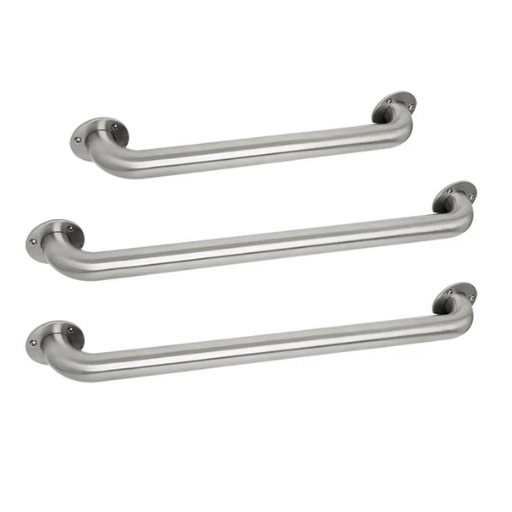
Grab bars made from stainless steel are divided into types based on their use and user preferences. The most common options include:
- Straight Grab Bars: Simple, linear bars that can be placed horizontally, vertically, or diagonally. These are ideal for basic support in a wide variety of locations such as bathrooms.
- Angled Grab Bars: Bend grab bars designed to fit the corner or some other specific placing for better lifting leverage.
- L-shaped Grab Bars: These grab bars offering two supporting surfaces. Therefore, they are used at the entry or exit points of bathtubs and showers.
- Wave Style Grab Bars: Maintain function but offer modern aesthetic appeal.
- Flip-Up Grab Bars: Grab bars that are hinged and can be folded away when not in use. Best suited for areas with user space restrictions.
- Textured or Peened Finish Grab Bars: These bars are specially designed to enhance grip in wet condition by providing a non-slip surface.
Every kind of stainless steel grab bar is carefully designed to encapsulate strength, protection against rust, and practicality, which makes them usable in both homes and businesses.
Different Styles: Horizontal vs. Vertical Grab Bars
|
Style |
Advantages |
Best Use Cases |
Key Considerations |
|---|---|---|---|
|
Horizontal |
Provides lateral support |
Ideal for balance during movements |
Requires sufficient wall length |
|
Vertical |
Facilitates pulling up or steadying oneself |
Great for entry and exit of bathtubs/showers |
Needs proper height placement |
|
Angled |
Combines benefits of horizontal and vertical |
Suited for users needing versatile support |
Requires careful mounting for maximum safety |
|
Foldable |
Space-saving and adaptable for tight areas |
Ideal for compact bathrooms and accessibility |
May require regular maintenance of hinges |
|
Double-Purpose |
Features shelves or integrated accessories |
Useful in multi-functional design spaces |
May involve more complex installation |
Material Options: Why Choose 304 Stainless Steel?
304 Stainless Steel is one of the materials which is used widely in different industries due to it’s rust resistance, strength, and it’s easy to endure fatigue. This type of rust resistant steel has almost 18% chromium and 8% nickel which gives it the outstanding power of enduring fatigue and rust for a long period of time even in tough conditions. Because of it’s hygiene, it is commonly used in medical equipment, kitchen tools, and bathroom devices.
A benefit to jump on for 304 is formability and weldability; its ease of modification increases from its flexible fabrication and ability to be shaped into intricate devices. Because of its uses indoors and outdoors for things like bathrooms and kitchens, and wide temperature versatility, it’s a profoundly useful steel. While it endures chemical exposure, has high tensile strength and structural integrity, damage reliability over time, these attributes make 304 stainless steel ideal for projects that require functional performance, aesthetic appeal and especially, persistence.
Commercial Grade vs. Residential Models
|
Key Point |
Commercial Grade Models |
Residential Models |
|---|---|---|
|
Durability |
High, built for heavy usage |
Moderate, designed for light use |
|
Material Quality |
Superior, premium-grade materials |
Standard, sufficient for home use |
|
Weight Capacity |
Higher load tolerance |
Lower load tolerance |
|
Maintenance Requirements |
Regular professional maintenance required |
Minimal, simpler to maintain |
|
Price Range |
More expensive due to quality |
Affordable for personal use |
|
Power Consumption |
Generally higher |
Energy-efficient for smaller needs |
|
Noise Levels |
May produce more operational noise |
Operates more quietly |
|
Lifespan |
Extended lifespan with upgrades |
Adequate for home applications |
|
Customizability |
Highly customizable for specific tasks |
Limited custom options |
|
Advanced Features |
Equipped with cutting-edge technologies |
Basic features for convenience |
How to Maintain Your Stainless Steel Grab Bar?
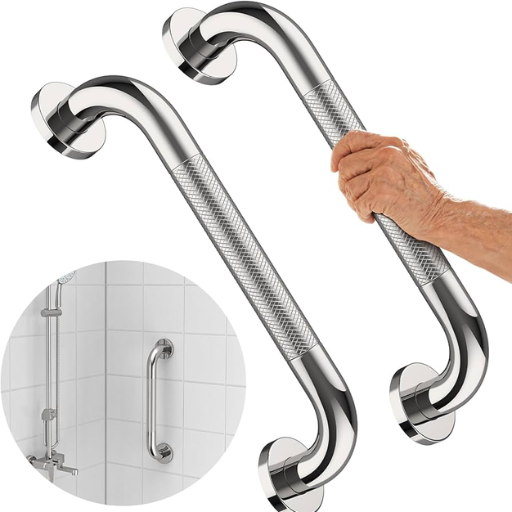
Here are the proper procedures to follow to maintain your stainless steel grab bar.
- Regular Cleaning: Just as any other grab bars, stain grabs need cleaning to be washed too. It can be weekly through a soft cloth soaked with warm soapy water. Also rinsing and drying is essential in removing fingerprints and dirt.
- Avoid Abrasive Cleaners: Use non-abrasive cleaning agents such as mild dish soap or specialized stainless steel cleaners. Avoid using steel wool or harsh chemicals, as these can scratch or damage the surface.
- Inspect for Damage: Elastomers will show signs of ageing with time – rust, loose fittings or perishability issues. Repair work must be done immediately for usability.
- Polish for Shine: To maintain appearance, apply a stainless steel polish from time to time and follow the manufacturer’s guild line. This prevents as well as restores the shine of the surface.
- Prevent Moisture Build-Up: Ensure proper ventilation around the grab bar to reduce exposure to excessive moisture that may lead to corrosion over time.
With proper practices, the grab bar will be easy to maintain and durable and visually sharp for safe use for the users in coming years.
Cleaning Tips for Longevity
- Routine Cleaning: Remove fingerprints, dirt, and dust from the grab bar. Adding soft, damp cloths along with a mild soap solution works no matter how much grime builds up. Over time, lack of maintenance dulls finishes and compromise materials.
- Avoid Abrasive Cleaners: Do not use aggressive scrubbing tools such as steel wool and chemical cleaners; these unrefined tools will scratch and harm the grab bar’s protective covering, damaging its lifespan. Stainless steel can be weakened by 30% by improper cleaning techniques.
- Address Stains Promptly: If you notice any staining or discoloration, remove it immediately with a solution of water and white vinegar or a non-abrasive stainless steel cleaner. Water deposits are contaminants etc. may make certain stains extremely difficult to remove.
- Rinse and Dry Thoroughly: Wet downs of the grab bars should be done to make sure the soap is removed alongside all other chemicals used in cleaning. The grab bar should also be dried completely using soft towels. This ensures that corrosion on the grab bar is minimized on top of preventing water spots.
- Inspect for Damage During Cleaning: During the cleaning process, take that time to check any grag bar for spots advanced wear, rust marks, or loose fixtures. By taking these measures, the issues can be resolved before it collapses meaning the grab bar can stay securely locked in place providing safety while using it.
Following the above detailed cleaning procedures will maintain and enhance the functionality and beauty of the grab bar for the years to come without compromising on its durability.
Reference Sources
-
Brass Alloys and Antimicrobial Properties: A study highlighted the antimicrobial properties of brass alloys compared to stainless steel. Brass surfaces showed reduced bacterial bioburden, making them potentially effective in healthcare settings.
-
Evaluation of Bath Grab Bar Placement: This research assessed the safety and usability of various grab bar configurations for older adults. It found significant differences in perceived safety and comfort among configurations, emphasizing the importance of design in enhancing user experience.
Frequently Asked Questions (FAQs)
Q: What is a stainless steel grab bar and how does it enhance safety in the bathroom?
A: A stainless steel grab bar is a durable safety rail designed to provide support and stability in slippery areas such as the shower or toilet. It enhances safety by offering a reliable handhold that minimizes the risk of falls, making the bathroom a safer environment for users.
Q: How much weight can a typical bathroom grab bar support?
A: Most stainless grab bars are designed to support a weight rating of up to 500 pounds, ensuring strong security and stability for users of all sizes.
Q: Are there different finishes available for stainless steel grab bars?
A: Yes, stainless steel grab bars come in various finishes including chrome, matte black, and other stylish options. This allows you to choose a finish that complements your bathroom decor while still providing security.
Q: How do I install a shower bar properly?
A: Installing a shower bar is easy; it typically involves securing the grab bar to wall studs using the included flange design. It’s important to follow the manufacturer’s installation instructions to ensure a secure and safe configuration.
Q: Can I conceal the mounting of a grab bar for a cleaner look?
A: Yes, many modern grab bars, like those from the security series by Bobrick and ASI, feature a flange design that allows for concealed mounting. This provides a sleek look while maintaining safety and functionality.
Q: Why is a stainless steel grab bar a better choice than other materials?
A: Stainless steel grab bars are more durable than plastic options, resisting rust and corrosion, particularly in wet environments like bathrooms. Their strength and anti-slip properties provide a safer grip.
Q: What should I consider when assessing the placement of safety rails in my restroom?
A: When assessing placement, consider the most common areas where support is needed, such as near the toilet and shower. Ensure there’s enough clearance and that the grab bars are at a height that allows easy navigation and access.
Q: Is free shipping available for purchasing grab bars online?
A: Many retailers offer free shipping on bathroom grab bars, including popular brands like Bobrick and ASI. Be sure to check the specific terms on the retailer’s website before making a purchase.
Q: What is the importance of an anti-slip feature on grab bars?
A: An inch anti-slip feature on grab bars is crucial as it provides a secure grip, especially in wet conditions. This feature significantly increases safety by reducing the chances of slipping when users are trying to stabilize themselves.

